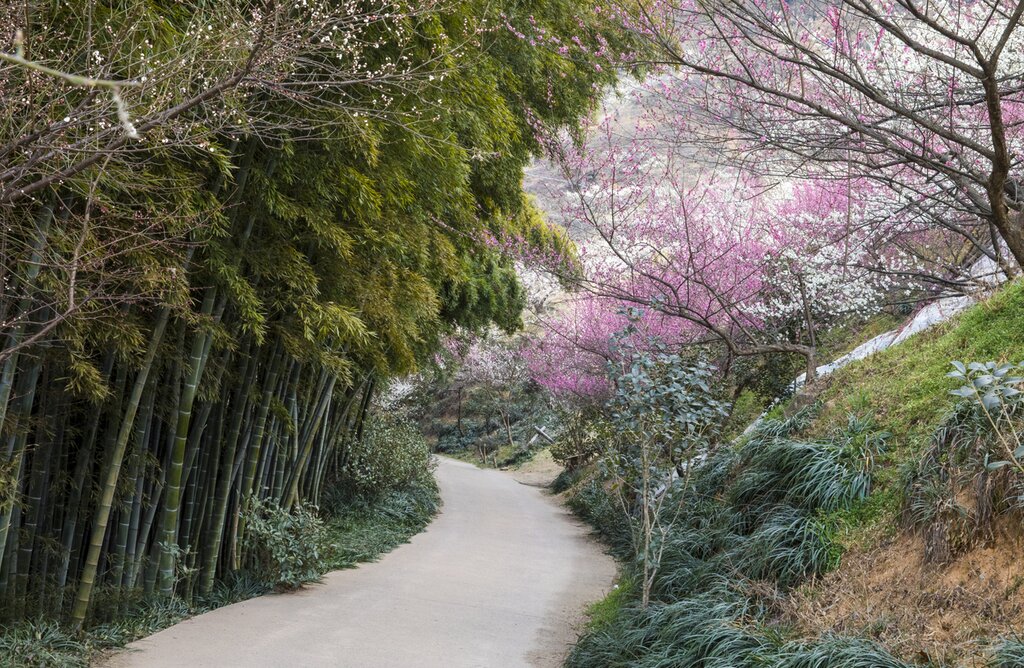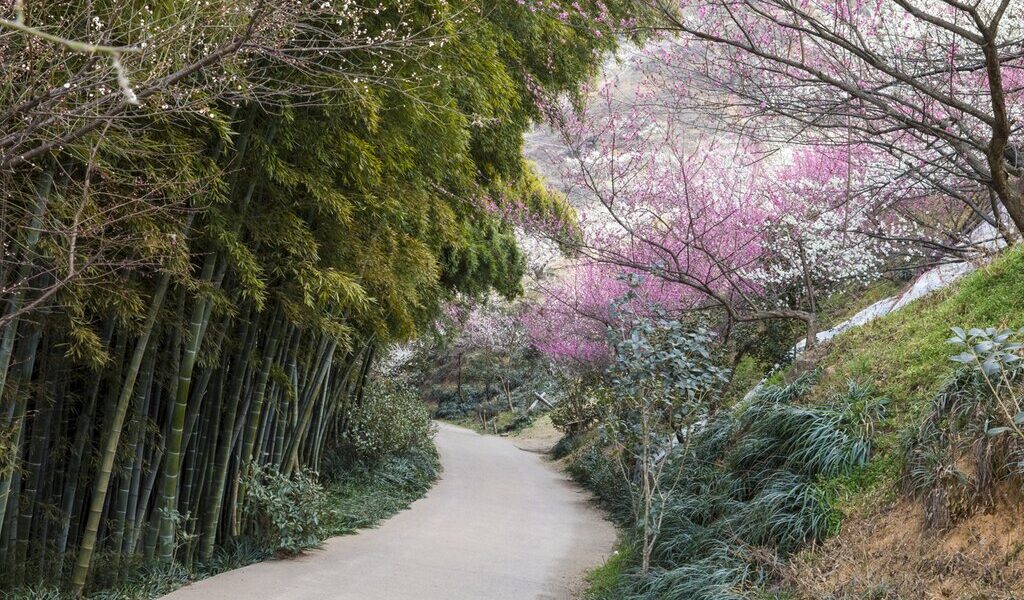
Signs of spring begin to peek through in March as frozen temperatures thaw and the first of South Korea’s flower festivals kick off. Crowds are low compared to other spring months, making March an ideal time to experience the season in South Korea without paying premium airfare prices. Travel to the southern provinces for the warmest spring weather, where you can visit historical sites in Gyeongju, sample traditional dishes in Jeonju, and admire the bamboo forests of Damyang.
## Discovering South Korea in March: A Traveler’s Guide
March in South Korea offers a unique transition between the chill of winter and the vibrant bloom of spring. It’s a month of subtle shifts, where the landscape awakens gradually, and the traveler can witness the country shedding its winter coat. Understanding the nuances of the weather, crowd levels, and regional attractions will ensure a memorable and rewarding experience.
**The Weather in March: A Gradual Awakening**
Following a period of cold and often dry weather during the winter months, March heralds the arrival of spring, bringing with it incrementally warmer temperatures and the first delicate signs of floral life. However, it’s crucial to remember that early March still retains a distinct wintry feel. Daytime temperatures generally hover in the low to mid 40s (Fahrenheit) during the initial weeks. As the month progresses, a noticeable warming trend emerges, paving the way for more pleasant outdoor activities. While dedicated winter sports enthusiasts can still enjoy the final moments of the ski season during the earlier part of March, those seeking the true essence of spring, with its burgeoning blossoms and milder climate, should consider planning their travels for the latter half of the month. It’s during this time that the country begins to host its initial flower festivals, celebrating the season’s reawakening.
With the arrival of spring, the days grow increasingly longer, with daylight averaging around eleven hours from sunrise to sunset. This extended daylight provides ample opportunity for exploration and sightseeing. However, layering clothing is essential during March, as temperatures can drop significantly as soon as the sun begins to set. Be sure to pack a warm and insulated coat for evening excursions, as temperatures can occasionally dip below freezing, particularly in the evenings. Conversely, a lighter jacket will be ideal for daytime adventures and explorations. March is generally a relatively dry month in South Korea, and visitors can expect to encounter mostly sunny skies, with cloud cover and the likelihood of rainfall gradually increasing as the month nears its end. It’s important to be aware that spring also marks the beginning of the yellow dust season, during which winds carry soil particles from the expansive Gobi Desert. These particles can combine with existing city smog, potentially resulting in periods of poorer air quality, especially in urban areas.
**Crowds and Costs: Finding the Sweet Spot**
The beginning of March presents a window of opportunity for travelers seeking a more tranquil experience. Crowd levels are generally at their lowest during this period, as South Korean students return to their studies after winter break, and the lingering cold weather tends to deter many international visitors. As the temperatures gradually rise, tourism begins to increase across the country. However, compared to the peak spring months, particularly April when the cherry blossoms are in full bloom, crowds throughout March remain relatively manageable. Many travelers opt to postpone their trips until the highly anticipated cherry blossom season. This makes March an ideal time to immerse yourself in the springtime beauty of South Korea without the overwhelming influx of tourists. Furthermore, you can often benefit from more affordable flight and hotel prices before the surge in demand that accompanies peak season.
**Where to Venture: Exploring Diverse Landscapes**
The majority of international visitors will begin their journey at Incheon International Airport, located in the bustling **Seoul Capital Area**. From this central hub, you can choose to travel south to experience the warmest and most distinctly springlike weather. For those with an appreciation for history and cultural heritage, a trip to the coastal city of **Gyeongju** is highly recommended. This city was once the capital of South Korea’s ancient Silla Dynasty and is now renowned for its wealth of archaeological sites. These include several UNESCO World Heritage sites, with **Bulguksa Temple**, situated on the slopes overlooking Korea’s ancient capital, being a particularly noteworthy example. Heading westward, food enthusiasts will find themselves in the culinary capital of **Jeonju**. This charming city is not only famous for its beautifully preserved traditional *hanok* homes but also as the birthplace of Korean *bibimbap*, the iconic mixed rice dish.
For a refreshing day trip away from South Korea’s major urban centers, consider exploring the idyllic countryside surrounding **Damyang**, located approximately one hour by car from Jeonju. Take a leisurely stroll through **Juknokwon**, South Korea’s largest and most impressive bamboo forest. Breathe in the crisp, clean air and immerse yourself in the serene atmosphere. While in Damyang, don’t miss the opportunity to visit the **Korea Bamboo Museum** to deepen your understanding of this versatile and culturally significant natural resource. If you crave even more verdant landscapes, the majestic trees lining the **Metasequoia Path** are sure to leave you in awe. For a more reflective and somber experience, you might consider a visit to the **Demilitarized Zone** (DMZ) located north of Seoul. This area offers a unique and poignant glimpse into the ongoing conflict between North and South Korea.
As the month of March draws to a close, consider venturing to **Jeollanam-do** (South Jeolla Province) to witness South Korea’s earliest and most vibrant flower festivals. The **Gwangyang Maehwa Festival** is particularly noteworthy, as it showcases the country’s largest collection of plum trees. With over 80 acres of trees blanketing the mountainous terrain, the festival is a true spectacle of floral beauty. Visitors can actively participate in a variety of festival activities, including enjoying traditional performances, browsing local artisan products, or simply admiring the breathtaking scenery. Nearby, the **Gurye Sansuyu Festival**, held at the foot of the majestic **Jirisan Mountain**, presents another explosion of color with its stunning displays of vibrant yellow Cornelian cherry flowers.
**A Variety of Activities: Making the Most of March**
For adventure travelers, the beginning of March offers the opportunity to catch the tail end of the ski season. While the snow conditions may rely more heavily on artificial snow at this point in the year, the slopes are often less crowded compared to the peak winter sports months of January and February. Be on the lookout for end-of-season discounts at major resorts in the northern **Pyeongchang** district, where the higher elevation results in colder temperatures, allowing the slopes to remain open for a longer duration.
As warmer days emerge towards the end of March, it is an ideal opportunity to explore the many city sights before the arrival of larger tourist crowds. Dedicate your days to visiting top tourist attractions such as the ancient **Cheomsongdae** astrological tower in Gyeongju and the **Gyeonggijeon Shrine** in Jeonju. For a fun and engaging family-friendly activity that can be enjoyed in most major cities, consider embarking on a guided or self-guided food tour through the vibrant market food stalls and local restaurants. Sampling the diverse range of local cuisine is a fantastic way to immerse yourself in South Korean culture. As temperatures begin to drop in the evening, you can explore the local nightlife, or opt to stay in and savor a comforting bowl of warm noodle soup.
**Key Events in March:**
* **Jeju Fire Festival, Jeju:** This annual festival, held in early March, welcomes the arrival of spring with a ceremonial field burning, symbolizing ancient Korean agricultural practices.
* **Gwangyang Maehwa Festival, Gwangyang:** The Plum Blossom Festival, one of South Korea’s earliest flower festivals, unfolds during the first half of the month, showcasing over 80 acres of blooming trees.
* **Gurye Sansuyu Festival, Gurye:** This annual festival celebrates the breathtaking yellow blossoms of the cornelian cherry.
* **Yeongdeok Snow Crab Festival, Yeongdeok:** This snow crab-themed event features a snow crab market and a cooking competition, providing a unique culinary experience.
B-2321

